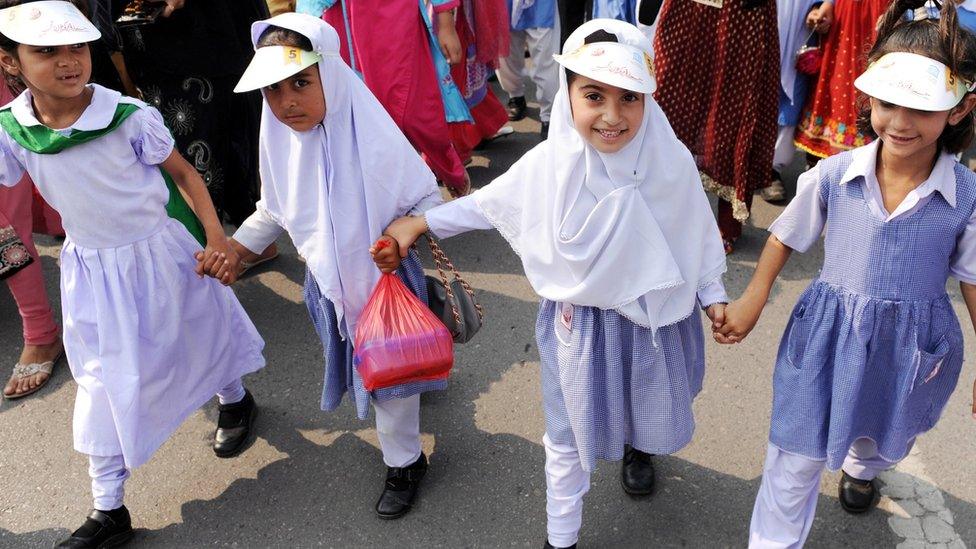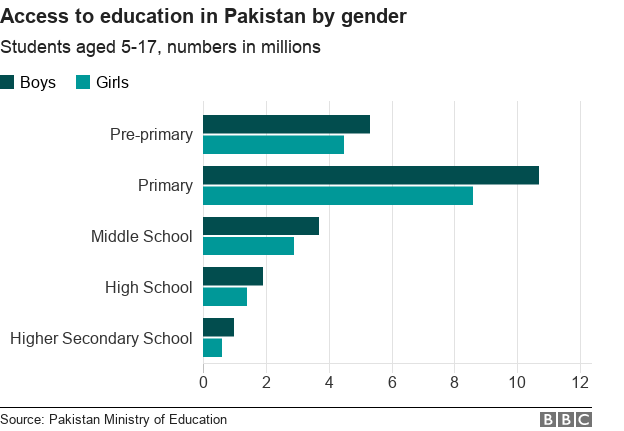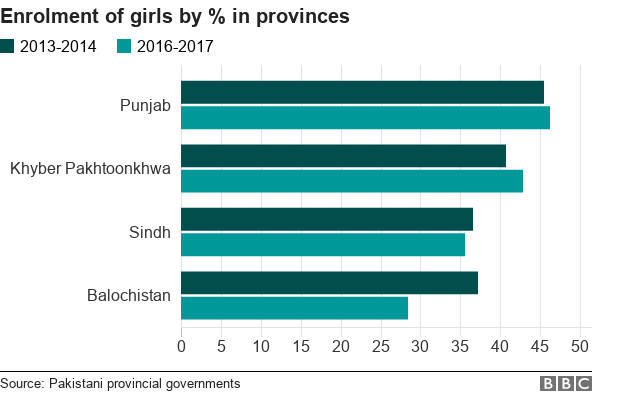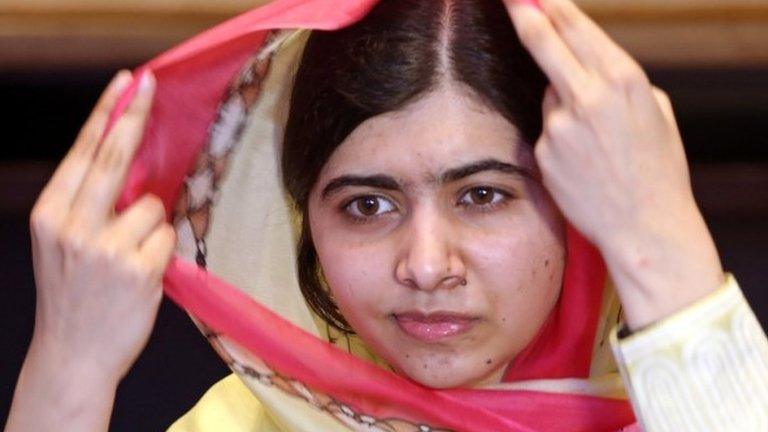Pakistan election: Are more girls going to school?
- Published

As Pakistan heads to the polls, most of the parties are making campaign pledges to improve access to education for girls.
One of the major players, the Pakistan Muslim League-Nawaz, has said that it would ensure equal access for women to education as well as health and employment., external
Earlier this year, Nobel Prize winner and champion of female education Malala Yousafzai went back to her home town after years away from the country.
Malala was shot in the head in 2012 by the Pakistani Taliban, who had begun a violent campaign to force the closure of hundreds of schools.
Allow X content?
This article contains content provided by X. We ask for your permission before anything is loaded, as they may be using cookies and other technologies. You may want to read X’s cookie policy, external and privacy policy, external before accepting. To view this content choose ‘accept and continue’.
Her charitable organisation, the Malala Fund, has built schools to help hundreds of young girls access education so that "every girl can learn and lead"., external
But are there as many girls as boys now entering the education system in Pakistan?
Overall, there are still proportionally more boys than girls going to school - but there are signs of improvement for girls in some areas of Pakistan.
No real change
Based on government data for 2017, that gap between the numbers of boys and girls in education is about 10% - this is from the 5th Grade (nine years old) up to the 12th Grade (17 years old).

These figures have barely changed since the last elections in 2013.
It's also important to note that a significant proportion of students in government public schools - both boys and girls - drop out of school at primary level.
"One of the major factors contributing to the drop in post-primary enrolment is the [lack of] availability of schools at secondary level or above," says Aleena Khan, from Alif Ailaan, external, a non-profit organisation working on education in Pakistan.

Girls still lag behind in terms of enrolment
"Almost 80% of [government] schools in Pakistan are primary schools."
She adds that where girls are out of school, the problem is typically not the attitude of the parents towards educating girls, but the lack of enough schools for girls.
The gap in the market is to some extent filled by private schools, which cater to all levels of education, but this sector is still smaller than the government sector.
However, even in private schools there is a gender gap - with a larger proportion of boys than girls enrolling.
And this has not changed much in recent years.
Regional variations
The national picture doesn't tell the whole story, however.
There are significant differences between provinces (and within provinces), with government data showing more girls enrolled than boys in some areas.

For example, Pakistan's second largest city, Lahore, has more girls than boys enrolled in primary schools through to high school.
And another city in Punjab province, Sialkot, shows a similar trend.
Earlier this year, Rana Mashood, the Education Minister in Punjab province, talked of a "phenomenal increase" in his province in girls education in the past two years.
The enrolment data for Punjab and Khyber Pakhtunkhwa provinces shows an improvement since 2013.
However, data for the enrolment of girls in both Sindh and Balochistan provinces shows a decline between 2013 and 2017.
Baela Raza Jamil, chief executive of Idara-e-Taleem-o-Aagahi , external, a charity that promotes access to education, says this reflects - with the exception of Punjab - a lack of specifically targeted programmes by provincial governments to address the gender imbalance.
"There is definitely a demand for girls' education in Pakistan," says Nadia Naviwala, a fellow with the Woodrow Wilson International Cente, externalr.
However, she adds: "Pakistan is not a country that offers great education for boys or girls. Focusing on enrolling girls keeps us from seeing that boys and girls face the same problem once they are in school."



- Published2 April 2018

- Published17 August 2017
